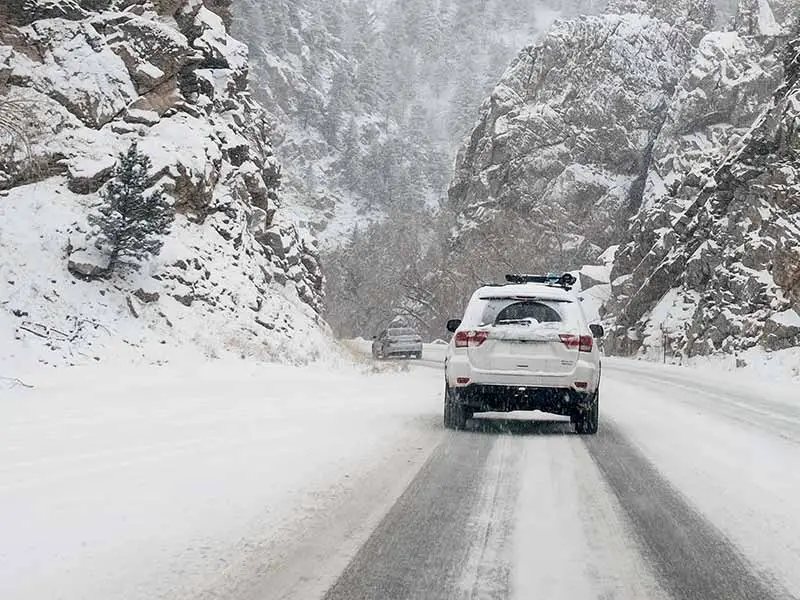Ever tried driving in the snow and felt like your car just isn’t quite sticking to the road? Picking the right tires for winter driving isn’t just a garage talk; it’s key to making sure your scenic drive through the snow doesn’t turn into a slippery situation. Let’s dig into what makes a tire good for snowy drives and if all-terrain tires fit the bill.
Are AT Tires Good In Snow?
All-Terrain Tires can handle a bit of snow and different types of roads because they’re pretty tough and flexible. But when the snow gets real thick or turns into ice, they might not be the safest choice compared to some other tires out there.
In this article we’re going to cover all the details of using All-Terrain Tires in the snow. We’ll discuss the good stuff and not-so-good stuff, compare them with other kinds of tires like the ones you use all year round, and the ones made just for winter. We’re going to dive deep into what makes a tire good for the snow and give you some tips on picking the right ones for your winter adventures.
Let’s take a closer look.
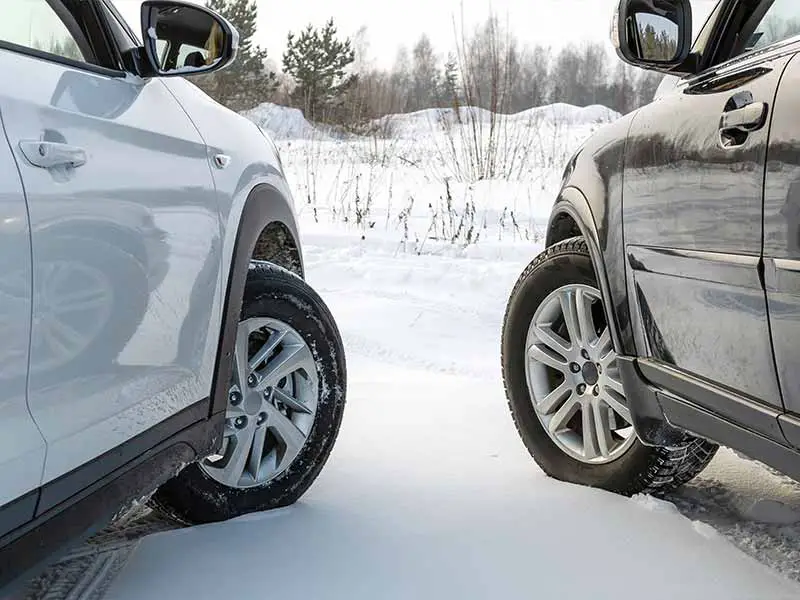
All-Terrain Tires and Snow Performance
Before we dive deep into the snowy specifics it’s important to understand that All-Terrain Tires are like the Swiss Army Knife of tires. They’re capable of dealing with a wide variety of tasks but not the best choice for any one specific problem. Similarly, All-Terrain Tires can manage both highways and off-roads but may not excel supremely in extreme conditions like deep snow or slick ice.
- Versatility is their forte, but let’s explore further.
Pros: When All-Terrain Tires Shine
Manageable Snow and Mixed Terrains
- Good in Light Snow: These tires can handle light snow with relative ease due to their hearty tread blocks and moderate depth.
- Mixed-Terrain Capability: Even if your snowy road has patches of gravel or mud, all-terrain tires will manage reasonably well.
Durability and Year-Round Use
- Rugged Construction: Engineered to be durable and can handle rough surfaces without giving in easily.
- All-Year Utility: Can be used throughout the year, in various conditions, without the need to switch tires seasonally.
Cons: The Slippery and Heavy Caveats
Deep Snow and Slick Ice Challenges
- Limited Traction: When the snow gets thick and heavy, all-terrain tires might struggle due to their generalist tread design.
- Ice Traction: On sheer ice, these tires don’t offer the same level of grip and stability as specialized winter tires.
Compromised on Extreme Off-Roading
- Muddy Snow: Mixed conditions of muddy slush and snow can test the limits of all-terrain tires, especially in rigorous off-road scenarios.
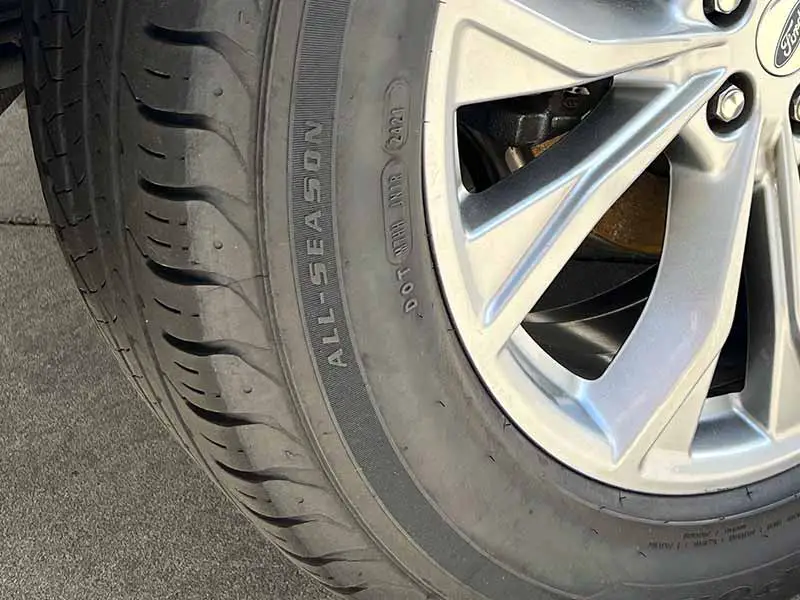
All-Terrain vs Other Tire Types in Snow
Navigating through snow-ridden paths can turn your leisurely drive into a potentially treacherous journey if your tires are not up to the task. We’ve chatted about the capabilities and limitations of All-Terrain tires. Now, let’s explore how they fare against other tire variants in the snowy realms, shall we?
All-Terrain vs All-Season Tires in Snow
All-Season Tires
- Everyday Ease: All-Season tires can be your daily drivers, offering a comfortable ride with adequate traction in mild weather conditions.
- Fair Winter Performance: While they do handle light snow, all-season tires might not be your best bet in heavier snowfall or icy conditions.
All-Terrain Tires
- Off-Road Adherence: All-Terrain tires step ahead when venturing into rough, mixed terrains.
- Snow Encounters: They offer reasonable traction in light snow, but when the snow piles up, these might struggle a bit.
All-Terrain vs Winter Tires in Snow
Winter Tires
- Majestic in Snow: Winter tires rule the roost when it comes to providing magnificent traction in deep snow and slippery conditions.
- Flexible in the Cold: The rubber compound of winter tires stays flexible even in bitterly cold conditions, ensuring steady grip and stability.
All-Terrain Tires
- Good, Not Great in Snow: While they manage decently in light to moderate snow, All-Terrain tires might not provide the same stellar performance as winter tires in intense snowy and icy conditions.
All-Terrain vs Mud Terrain Tires in Snow
Mud Tires
- Conquering the Mud: Unparalleled when navigating through thick mud, providing exceptional grip and self-cleaning capabilities.
- A Snowy Dilemma: Their large, aggressive treads can indeed bite into the snow, but on slick ice, mud tires might not be the most reliable.
All-Terrain Tires
- A Bit of Both Worlds: Offering a blend of on-road comfort and off-road prowess, all-terrain tires can manage varied surfaces better than mud tires.
- Navigating Through Snow: While they might outperform mud tires on snowy roads, the deeper and icier it gets, the more cautious one should be.
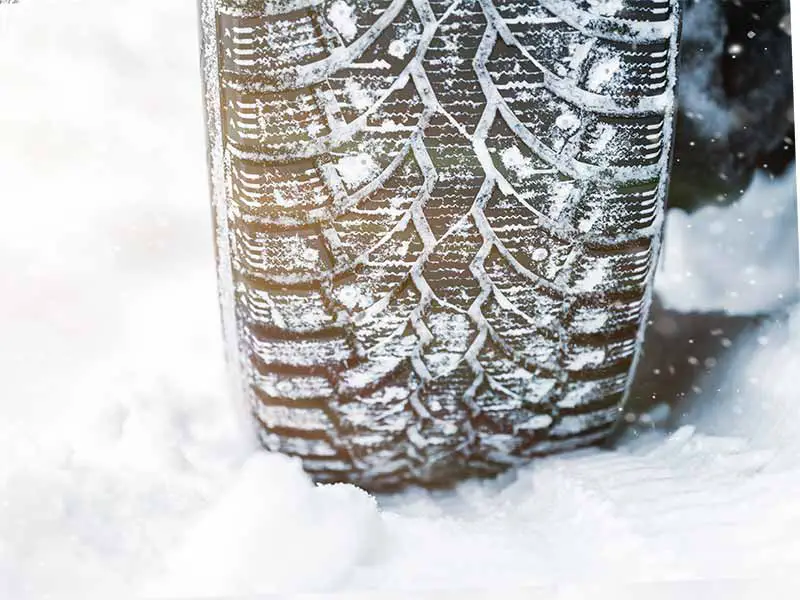
What Makes A Tire Good In Snowy Or Icy Conditions?
Knowing what to look for in a tire that will see quite a bit of snow and ice can help you make a more informed decision. Let’s discuss these key features and factors.
Importance of Tread Blocks and Pattern in Snowy and Icy Conditions
Picture this: You’re walking on a slippery surface. Would you choose flat-soled shoes or something with a bit of a pattern to avoid slipping? In the realm of tires, tread blocks and the tread pattern play a similar role to the sole of your shoe.
- Tread Blocks: These are the raised parts of your tire that contact the road. When it comes to driving in the snow, think of tread blocks like little biting edges, clutching onto the slippery surface, trying to give you better traction, control, and stability.
- Tread Pattern: This refers to the design made by the tread blocks. A good tread pattern for winter driving is like having a well-designed sole on a snow boot – it helps channel the packed snow out from under the tire, reducing the risk of “floating” on top the snow and losing grip.
In essence, tread blocks and pattern in a snow tire or winter tire are critical in maintaining traction and control, keeping you stable and secure even on the smooth, icy, and tricky terrains winter brings.
The Significance of Rubber Compounds at Low Temperatures
Let’s talk about the rubber compound, which is basically what your tire is made of. Ever noticed how some materials get harder in the cold? The rubber compound in tires is crafted keeping in mind this very aspect, especially in those designed for winter driving.
- Staying Soft: A winter tire utilizes a rubber compound that remains relatively soft in low temperatures, allowing it to grip the road better, even when it’s icy or covered in packed snow.
- Enhanced Grip: Unlike a mud terrain tire, which might have a tougher rubber composition to deal with rocks and mud, winter tires provide enhanced grip and reduced hardening in the chilly conditions, offering better control and stability.
The role of proper tire inflation and maintenance in winter driving
Finally, even the best tires need a bit of TLC to perform their best. Proper tire care in winter isn’t just pivotal; it’s a non-negotiable for safe journeys.
- Correct Inflation: Ensuring your tires are inflated correctly is vital. An under- or over-inflated tire can affect your control over the vehicle, making driving in winter conditions riskier.
- Routine Checks: Regularly checking your tires for wear and tear, and ensuring they’re in top condition, helps prevent unexpected mishaps. Whether you’re riding on a steadfast winter tire or opting for something like a mud terrain tire, routine checks and maintenance are your best bet in ensuring optimum performance.
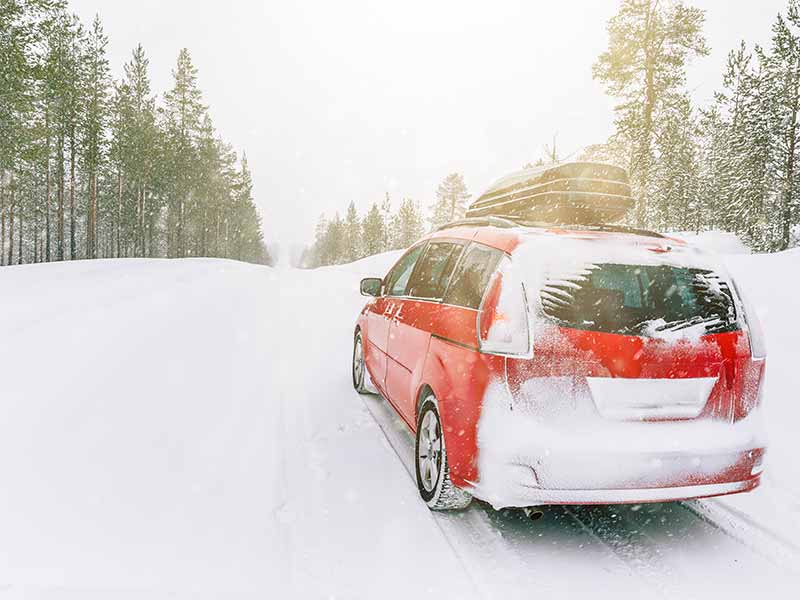
What Tire is Best for Snow?
Let’s unwrap this question and look at important factors that determine which tire takes the throne in winter driving.
Analyzing Various Tests and Real-World Scenarios
Navigating through snow can be a tale of varied stories – smooth in one scenario and slippery in the next. Different tires have been tested across these varied snowy tales, each showcasing its own strengths and challenges.
- All-Season Tires: Excellent year round tires for daily commuting and light duty use on-road in a wide variety of weather from dry pavement, heavy rain, and light snow.
- Snow Tires: Specifically designed with a tread pattern that channels snow and improves grip, they do a superior job on snow-laden roads.
- Mud Tires and All-Terrain Tires: Though built for robustness, their real-world performance on snow often is a mix of hits and misses, with some providing reasonable traction and others struggling on icy terrains.
Testing and real-world scenarios have often shown snow tires and winter tires to frequently outperform when the roads are blanketed white, providing a safety net with enhanced grip and control.
Balancing Pros and Cons
It’s not just about moving; it’s about moving safely, and without burning a hole in the pocket, isn’t it?
- All-Season Tires: Designed to handle a wide variety of conditions (including some light to moderate snow) for on-road traction but not ideal for off-road or severe snow service.
- Snow Tires: While offering optimal snow traction, they can be costlier and may not perform as well in non-snowy conditions.
- Mud Tires: Robust for off-road, yet perhaps not the safest bet for packed snow and icy roads.
- All-Terrain Tires: A versatile option, offering a balance between cost and performance, yet sometimes sacrificing optimal snow performance.
Balancing the pros and cons becomes pivotal in choosing a tire that offers not just the safety and performance but also doesn’t shake your budget balance too hard.
Recommendations for Different User Profiles and Driving Conditions
Now, what suits one might not suit another, right? So, let’s look at some recommendations based on varied user profiles and driving scenarios.
- The Winter Wanderer: If you’re someone who frequently drives through heavy snow, a dedicated snow tire or winter tire becomes your safe bet, ensuring optimized traction and control.
- The All-Season Driver: If your drives navigate through varied terrains and seasons, all-terrain tires could be your ally, offering a blend of functionality across conditions, albeit with a few compromises in heavy snow.
- The Occasional Snow Drifter: For those who encounter snow only occasionally and wish not to invest heavily, looking at terrain tires or mud tires with a decent snow performance rating might be a viable option.
Resources
Below are some links you may find helpful when learning about tires
- How do all-terrain and mud tires do in snow? – Discount Tire
- Are all-terrain (A/T) and mud tires (M/T) good in the snow? – Les Schwab
Final Thoughts
Driving in the snow can be a breeze or a total slip-and-slide based on the tires you’ve got. All-Terrain Tires? They’re decent all-year-round and will do okay in a light snow situation because they’re made to handle a bit of everything.
If you’re dealing with lots of snow or super icy roads often, it’s probably smarter to go for tires that are made especially for winter driving, as they’re going to give you the best grip and control. So, in choosing your tires, think about what roads you’ll be driving on the most and always make sure to keep ‘em in check for wear and tear.
Good luck and happy motoring.
